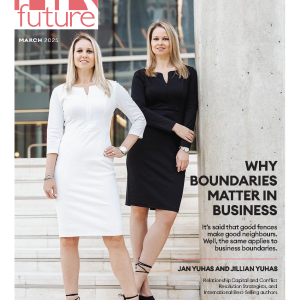Change is a complex subject and looking at it logically one could make use of a mathematical equation to unpack and simplify the matter. This might ignore some of the final details, but it is important to capture the crucial aspects. The dynamics of change and culture in all organisations has a few basic ingredients that should be taken care of.
The leader has the most important role to play to make the change process less daunting. The better the leader, the smoother the change. Change is not always about changing the culture, but the leader should first look at the impact on the required change of the current culture.
The manager or leader has a very demanding job: Apart from the complexity of the change process the leader has to deal with, the journey is usually also governed by politics.
While swimming through the rough seas of budget, performance, return on investment and team dynamics, CHANGE is required. The top brass gives one direction, the team runs in the opposite direction and the consulting firm comes from who knows where with some jargon and processes and suggestions that are not always practical. Most of the time there is alignment from top management and the consultants that the CULTURE must change. But is that really true? How will you know? Continuing with the metaphor of cheese making, you, the leader, are in control of making the Cheese – you are the Big Cheese.
Firstly you need to understand yourself in the leader position and understand your responsibilities. Do you have the passion for this job? If you do not like to make cheese and prefer to make pasta, quit being a cheese maker. If you don’t like the department, the job, any of the people, maybe you should not be the cheese maker. If you prefer only to make Cheddar and are not interested in Brie/Feta/Blue Cheese, then move to the Cheddar making line. You cannot lead your team to do something you are not willing to do yourself. You need to be passionate about your product and be the expert at how to make it. Don’t go in half-heartedly and expect your team to be the magic that brinsg it all together.
The manager needs to understand the details. You cannot manage if you don’t know the details. You need the knowledge, skills and experience and you need to know the people assisting you.
As the leader you need to give your employees a chance to be heard. Most of the time there is a gap between the executives and employees. They just do not use the same dialect (sometimes they talk two remotely different languages!) Do not underestimate the valuable insights you as leader can gather by listening attentively, without judgement and preconceived ideas, to what is happening on the shop floor. Don’t make assumptions and think you have it all figured out.
One of my clients needed to take their graphics business to the next level and had a few ideas for marketing the business. The day the two owners sat around the table with their design team, they were astounded by the fresh, new ideas from their workforce. That sparked even more ideas and an amazing commitment from all employees to assist with the marketing over and above their existing roles.
You will get very valuable insights if you get to know your ingredients better. Find out which part of the old and new culture is or is not aligned with the values. Which ingredients mix and which don’t go well together. Take it seriously, this is not only an exercise to tick the box, this WILL add value. Ask the question: What can I do as a leader to change and support the people? Try to find out if there are any underlying beliefs, feelings or mindsets that are limiting the productivity and effectiveness. Maybe change is not required if you’ve got this far.
The cheese maker must have the bigger picture in mind all the time. He must know the recipe from and keep the equation in mind.
Here is a list of critical behaviours for the leader amid change:
• Resource the positive behaviours;
• Select the ingredients, know the recipe and gather the equipment;
• Follow through with promises, good and bad;
• Identify and reinforce positive and negative boundaries;
• Changing and enforcing controls that will assist the process;
• Increase feedback;
• Evaluate performance;
• Take remedial actions where required;
• Ask for feedback;
• Integrate formal (new rules, metrics, incentives) and informal (networking, coffee sessions) interventions; and
• Measure/monitor the underlying beliefs, feelings and mindsets (like a cheese maker should measure the temperature and pH throughout the process).
This process will guide you in your role as leader to achieving the success you desire so that you take the team and the organisation to the next level.
Wilmien Davis is the member of the International Coach Federation (ICF).













